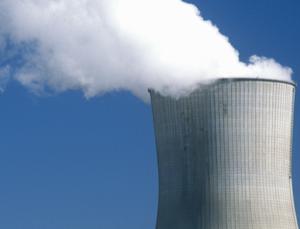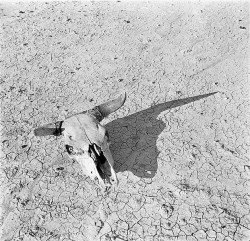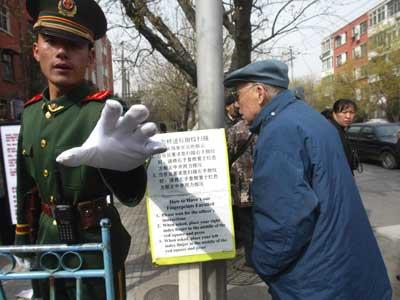– On The CSS 6/21-Globalists Creating Food & Water Shortages/Deborah Tavares- 8pm EST (The Common Sense Show, June 21, 2015)
Water shortages
Water Shortages Hit US Power Supply (New Scientist)
– Water shortages hit US power supply (New Scientist, Aug 15, 2012):
As the United States’ extended heat wave and drought threaten to raise global food prices, energy production is also feeling the pressure. Across the nation, power plants are becoming overheated and shutting down or running at lower capacity; drilling operations struggle to get the water they need, and crops that would become biofuel are withering.
While analysts say the US should survive this year without major blackouts, more frequent droughts and increased population size will continue to strain power generation in the future.
Power plants are a hidden casualty of droughts, says Barbara Carney of the National Energy Technology Laboratory (NETL) in Morgantown, West Virginia, because they are completely dependent on water for cooling and make up about half the water usage in the US. That makes them vulnerable in a heat wave. If water levels in the rivers that cool them drop too low, the power plant – already overworked from the heat – won’t be able to draw in enough water. In addition, if the cooling water discharged from a plant raises already-hot river temperatures above certain thresholds, environmental regulations require the plant to shut down.
One nuclear plant in Connecticut recently had to shut down because the sea water used for cooling was too warm. Nationwide, nuclear generation is at its lowest in a decade, with the plants operating at only 93 per cent of capacity.
Nuclear is the thirstiest power source. According to NETL, the average nuclear plant that generates 12.2 million megawatt hours of electricity requires far more water to cool its turbines than other power plants. Nuclear plants need 2725 litres of water per megawatt hour for cooling. Coal or natural gas plants need, on average, only 1890 and 719 litres respectively to produce the same amount of energy.
Read moreWater Shortages Hit US Power Supply (New Scientist)
20 Signs That A Horrific Global Food Crisis Is Coming
In case you haven’t noticed, the world is on the verge of a horrific global food crisis. At some point, this crisis will affect you and your family. It may not be today, and it may not be tomorrow, but it is going to happen. Crazy weather and horrifying natural disasters have played havoc with agricultural production in many areas of the globe over the past couple of years. Meanwhile, the price of oil has begun to skyrocket. The entire global economy is predicated on the ability to use massive amounts of inexpensive oil to cheaply produce food and other goods and transport them over vast distances. Without cheap oil the whole game changes. Topsoil is being depleted at a staggering rate and key aquifers all over the world are being drained at an alarming pace. Global food prices are already at an all-time high and they continue to move up aggressively. So what is going to happen to our world when hundreds of millions more people cannot afford to feed themselves?
Most Americans are so accustomed to supermarkets that are absolutely packed to the gills with massive amounts of really inexpensive food that they cannot even imagine that life could be any other way. Unfortunately, that era is ending.
There are all kinds of indications that we are now entering a time when there will not be nearly enough food for everyone in the world. As competition for food supplies increases, food prices are going to go up. In fact, at some point they are going to go way up.
Let’s look at some of the key reasons why an increasing number of people believe that a massive food crisis is on the horizon.
The following are 20 signs that a horrific global food crisis is coming….
Read more20 Signs That A Horrific Global Food Crisis Is Coming
The US is building an £8 billion super military base on the Pacific island of Guam
The US is building an £8 billion super military base on the Pacific island of Guam in an attempt to contain China’s military build-up.

A B-1B Lancer takes off from Andersen Air Force Base in Guam in 2003 Photo: GETTY
The expansion will include a dock for a nuclear-powered aircraft carrier, a missile defence system, live-fire training sites and the expansion of the island’s airbase. It will be the largest investment in a military base in the western Pacific since the Second World War, and the biggest spend on naval infrastructure in decades.
However, Guam residents fear the build-up could hurt their ecosystem and tourism-dependent economy.
Estimates suggest that the island’s population will rise by almost 50 per cent from its current 173,000 at the peak of construction. It will eventually house 19,000 Marines who will be relocated from the Japanese island of Okinawa, where the US force has become unpopular.
The US’s Environmental Protection Agency (EPA) has said that this could trigger serious water shortages. The EPA said that dredging the harbour to allow an aircraft carrier to berth would damage 71 acres of pristine coral reefs.
The EPA’s report said the build-up would “exacerbate existing substandard environmental conditions on Guam”.
Read moreThe US is building an £8 billion super military base on the Pacific island of Guam
Al Gore takes cash for ‘Life Earth’ water campaign from Dow Chemical
Al Gore is an elite puppet like Bush and Obama. He has been selected by the elite to brainwash the people with the global warming scam in order to push through with the elite agenda of world government, the ‘New World Order’.
It’s all about money, power and control.
– Al Gore could become world’s first carbon billionaire
Environmentalists condemn former vice-president for letting controversial company fund Life Earth
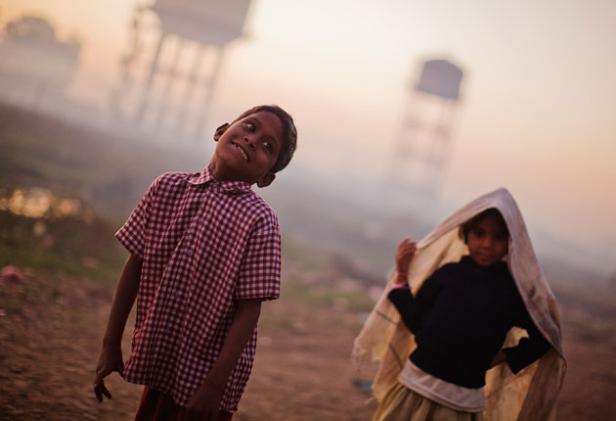
Shyam Babu, 10, lives close to the Dow-owned Union Carbide Factory in Bhopal, India
Al Gore, the self-styled squeakiest-clean and deepest-green politician in American history, has some explaining to do this weekend. His environmental organisation has taken money to raise awareness about the need for clean water from a controversial chemicals company.
Dow Chemical, the US firm, is sponsoring Life Earth events in 150 cities today. The event aims to raise money for clean water programmes. Research by environmental organisations has found dangerous levels of highly toxic chemicals in rivers, lakes and other water supplies close to several other factories owned by Dow and its subsidiaries in countries including the United States, Brazil and South Africa.
Dow’s factories at its global headquarters in Midland, Michigan, have been accused of contaminating the region, including the Tittabawassee River floodplains, with high levels of dioxin – one of the “dirty dozen” most dangerous chemicals. In 2007, the highest level of dioxin contamination ever measured by the US Environmental Protection Agency was found in the Michigan Saginaw River. Residents are advised to avoid contact with river sediments and not to eat locally caught fish.
Campaigners are outraged by what they call Dow’s “blatant attempt” to paint itself as a green company and divert attention from the Bhopal scandal, where 25 years after the 1984 disaster at the plant (then owned by Union Carbide) thousands of villagers are still forced to use contaminated water which causes birth defects, cancer and skin disorders.
Live Earth, which has accumulated celebrity supporters and thousands of activists worldwide since its climate change concert in 2007, has been criticised by campaigners for joining forces with a company which has a track record of, at best, being slow to clean up toxic spills that pollute water, damage ecosystems and endanger lives.
Three weeks ago, Amnesty International asked Live Earth to reconsider the sponsorship unless Dow publicly agreed to clean up Bhopal. Live Earth did not respond.
Read moreAl Gore takes cash for ‘Life Earth’ water campaign from Dow Chemical
China: Severe Drought; Cloud-Seeding Across 77 Counties; Emergency Supplies of Drinking Water to 18 Million People; Rice Prices Spike 10% in One Month
Got food & water supplies?
– The Food Crisis of 2010: USDA vs Reality
The artificial rain through cloud-seeding is like poison.
Severe drought in Southwestern China is driving up food prices and heightening concerns about the availability of drinking water.
– Price of rice rises in south China (China Daily):
Huang Weijuan, a Guangzhou housewife, said she spent 55 yuan ($8) to buy a bag of rice in Taojin agricultural bazaar in the city’s Yuexiu district over the weekend.
“But the price for the same bag of rice, which weighs 20 kg, was about 50 yuan a month ago,” Huang said.
And the price of courgette, a vegetable which mainly grows in Yunnan province, is now selling at 5 yuan per kg in the bazaar, up 0.5 yuan from last month, Huang said.
“The price of many foods and vegetables have gone up in the past month and I worry that prices will keep increasing,” she said.
The government is rushing to help in order to alleviate the potential for social tension. In some of the hardest hit provinces, the government has been forced to provide emergency supplies of drinking water to 18 million people. They’ve also resorted to creating artificial rain through cloud-seeding. Over 3,200 artillery pieces bombarded the sky with chemicals across 77 counties, forcing moderate rain to fall.
“It was the first rain I have seen since last October, but it only lasted for about three hours from 3 am to 6 am this morning,” Bu Lupiao, a farmer of Bapiao village in Jinghong county, Xishuangbanna Dai autonomous prefecture.
Since October… That’s one heck of a drought. Yet the farmer above was lucky. In Chuxiong Yi prefecture, over 100 cloud seeding guns failed to create rain. Cloud seeding isn’t a long-term solution, thus the natural rain better come soon else there could be more pressure on living standards in drought-hit regions.
The 21st-century African land grab by rich countries facing global food and water shortages
Highly recommended article.
An Observer investigation reveals how rich countries faced by a global food shortage now farm an area double the size of the UK to guarantee supplies for their citizens

A woman tends vegetables at a giant Saudi-financed farm in Ethiopia.
We turned off the main road to Awassa, talked our way past security guards and drove a mile across empty land before we found what will soon be Ethiopia’s largest greenhouse. Nestling below an escarpment of the Rift Valley, the development is far from finished, but the plastic and steel structure already stretches over 20 hectares – the size of 20 football pitches.
The farm manager shows us millions of tomatoes, peppers and other vegetables being grown in 500m rows in computer controlled conditions. Spanish engineers are building the steel structure, Dutch technology minimises water use from two bore-holes and 1,000 women pick and pack 50 tonnes of food a day. Within 24 hours, it has been driven 200 miles to Addis Ababa and flown 1,000 miles to the shops and restaurants of Dubai, Jeddah and elsewhere in the Middle East.
Ethiopia is one of the hungriest countries in the world with more than 13 million people needing food aid, but paradoxically the government is offering at least 3m hectares of its most fertile land to rich countries and some of the world’s most wealthy individuals to export food for their own populations.
The 1,000 hectares of land which contain the Awassa greenhouses are leased for 99 years to a Saudi billionaire businessman, Ethiopian-born Sheikh Mohammed al-Amoudi, one of the 50 richest men in the world. His Saudi Star company plans to spend up to $2bn acquiring and developing 500,000 hectares of land in Ethiopia in the next few years. So far, it has bought four farms and is already growing wheat, rice, vegetables and flowers for the Saudi market. It expects eventually to employ more than 10,000 people.
But Ethiopia is only one of 20 or more African countries where land is being bought or leased for intensive agriculture on an immense scale in what may be the greatest change of ownership since the colonial era.
An Observer investigation estimates that up to 50m hectares of land – an area more than double the size of the UK – has been acquired in the last few years or is in the process of being negotiated by governments and wealthy investors working with state subsidies. The data used was collected by Grain, the International Institute for Environment and Development, the International Land Coalition, ActionAid and other non-governmental groups.
The land rush, which is still accelerating, has been triggered by the worldwide food shortages which followed the sharp oil price rises in 2008, growing water shortages and the European Union’s insistence that 10% of all transport fuel must come from plant-based biofuels by 2015.
Read moreThe 21st-century African land grab by rich countries facing global food and water shortages
Paradise Lost: Fertile Crescent will disappear this century
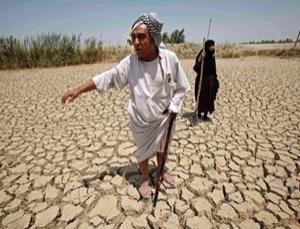
The Fertile Crescent is left dry as Turkish dams reduce the Tigris and Euphrates rivers to a trickle (AP)
Is it the final curtain for the Fertile Crescent? This summer, as Turkish dams reduce the Tigris and Euphrates rivers to a trickle, farmers abandon their desiccated fields across Iraq and Syria, and efforts to revive the Mesopotamian marshes appear to be abandoned, climate modellers are warning that the current drought is likely to become permanent. The Mesopotamian cradle of civilisation seems to be returning to desert.
Last week, Iraqi ministers called for urgent talks with upstream neighbours Turkey and Syria, after the combination of a second year of drought and dams in those countries cut flow on the Euphrates as it enters Iraq to below 250 cubic metres a second. That is less than a quarter the flow needed to maintain Iraqi agriculture.
Tensions have been growing since May, when the Iraqi parliament refused to approve a new much-needed trade deal with Turkey unless it contained binding clauses on river flows. But Turkey appears in no mood to compromise. In July, it announced the final go-ahead for yet another dam, the Ilisu on the Tigris.
Meanwhile, according to Hassan Partow at the UN Environment Programme, Iraq’s hydrological misery is compounded by Iran, which is also building new dams on tributaries of the Tigris. “Some of these rivers have run completely dry,” he told New Scientist. And Iraq itself is set to worsen the problem with its own dam building, he says. This year construction is set to begin on another Tigris tributary at Bekhme Gorge in Iraq’s northern province of Kurdistan. At 230 metres it will be one of the world’s tallest dams.
Paradise lost
In ancient times, the valleys of the Tigris and Euphrates rivers through Iraq were bountiful – irrigating fields that sustained civilisations like Sumer and cities like Babylon. But the combination of drought, dams and Iraq’s own desire to revive its agriculture is placing huge pressure on the last remnant of that bounty, the Mesopotamian marshes, which form where the Tigris and Euphrates meet and flow to the sea.
Read moreParadise Lost: Fertile Crescent will disappear this century
India: Water Wars Break Out
The monsoon is late, the wells are running dry and in the teeming city of Bhopal, water supply is now a deadly issue.
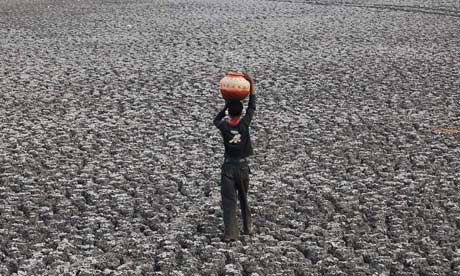
A young man walks across Bhopal’s Upper Lake, which has shrunk to an eighth of its original area. Photograph: STR/AFP/Getty Images
It was a little after 8pm when the water started flowing through the pipe running beneath the dirt streets of Bhopal’s Sanjay Nagar slum. After days without a drop of water, the Malviya family were the first to reach the hole they had drilled in the pipe, filling what containers they had as quickly as they could. Within minutes, three of them were dead, hacked to death by angry neighbours who accused them of stealing water.
In Bhopal, and across much of northern India, a late monsoon and the driest June for 83 years are exacerbating the effects of a widespread drought and setting neighbour against neighbour in a desperate fight for survival.
India’s vast farming economy is on the verge of crisis. The lack of rain has hit northern areas most, but even in Mumbai, which has experienced heavy rainfall and flooding, authorities were forced to cut the water supply by 30% last week as levels in the lakes serving the city ran perilously low.
Across the country, from Gujarat to Hyderabad, in Andhra Pradesh, the state that claims to be “the rice bowl of India”, special prayers have been held for more rain after cumulative monsoon season figures fell 43% below average.
On Friday, India’s agriculture minister, Sharad Pawar, said the country was facing a drought-like situation that was a “matter for concern”, with serious problems developing in states such as Punjab, Uttar Pradesh and Bihar.
In Bhopal, which bills itself as the City of Lakes, patience is already at breaking point. The largest lake, the 1,000-year-old, man-made Upper Lake, had reduced in size from 38 sq km to 5 sq km by the start of last week.
The population of 1.8 million has been rationed to 30 minutes of water supply every other day since October. That became one day in three as the monsoon failed to materialise. In nearby Indore the ration is half an hour’s supply every seven days.
Virtually free water supply for corporations vs. water shortages for residents
Public spigot stays open for water bottlers
You probably thought there was a serious water shortage in Florida.
It’s why we’re spending billions to repair and repurify the Everglades, right? It’s why we’re not supposed to run our lawn sprinklers more than once or twice a week.
But hold on. It turns out there’s a boundless, virtually free supply of Florida water — though not for residents. The public spigot remains open day and night for Nestle, Coca-Cola, PepsiCo and 19 other corporations that bottle our water and sell it for a huge per-unit profit.
The stuff is no safer or tastier than most municipal tap water, but lots of us buy it, anyway. You know all the brands: Deer Park, Dasani, Zephyrhills, Aquafina, even Publix.
Common sense would suggest that a company with a balance sheet like Coca-Cola’s or Pepsi’s ought to pay for the water they take, the same as homeowners and small businesses do.
Nope. Every year, state water managers allow large bottling firms to siphon nearly two billion gallons from fresh springs and aquifers. The fees are laughably puny.
For example, it cost Nestle Waters of North America the grand sum of $150 for a permit to remove as much water as it pleases from the Blue Springs in Madison County. Every day, Nestle pipes about 500,000 gallons, enough to fill 102,000 plastic bottles that are then shipped to stores and supermarkets throughout the Southeast.
Read moreVirtually free water supply for corporations vs. water shortages for residents
Schwarzenegger declares California drought state of emergency
Federal water managers plan to temporarily cut off water this March to thousands of California farms. The state has said it probably would deliver just 15 percent of the water contractors have requested this year.
The state delivers water to more than 25 million Californians and more than 750,000 acres of farmland.
“It’s too late,” he said. “It’s going to sound horrible coming from a farmer because you never turn down help, but come on, this thing is over with.”
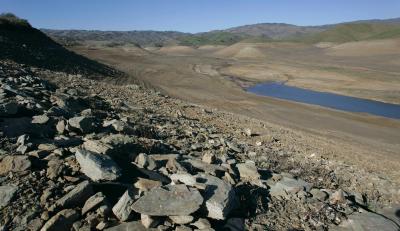
Layers of sun-baked earth are exposed in an area of the San Luis Reservoir near Gustine that was previously underwater but was dried out in January because of drought conditions. (Patrick Tehan / Mercury News)
SACRAMENTO, Calif. (AP) — Gov. Arnold Schwarzenegger declared a state of emergency Friday because of three years of below-average rain and snowfall in California, a step that urges urban water agencies to reduce water use by 20 percent.
“This drought is having a devastating impact on our people, our communities, our economy and our environment, making today’s action absolutely necessary,” the Republican governor said in his statement.
Mandatory rationing is an option if the declaration and other measures are insufficient.
The drought has forced farmers to fallow their fields, put thousands of agricultural workers out of work and led to conservation measures in cities throughout the state, which is the nation’s top agricultural producer.
Agriculture losses could reach $2.8 billion this year and cost 95,000 jobs, said Lester Snow, the state water director.
Read moreSchwarzenegger declares California drought state of emergency
Drought to cut off federal water to California farms
SACRAMENTO, Calif. (AP) — Federal water managers said Friday that they plan to cut off water, at least temporarily, to thousands of California farms as a result of the deepening drought gripping the state.
U.S. Bureau of Reclamation officials said parched reservoirs and patchy rainfall this year were forcing them to completely stop surface water deliveries for at least a three-week period beginning March 1. Authorities said they haven’t had to take such a drastic move for more than 15 years.
Read moreDrought to cut off federal water to California farms
California faces grimmest water situation ever
Drought causes the state’s agriculture industry to disappear while residents continue to consume water at high levels
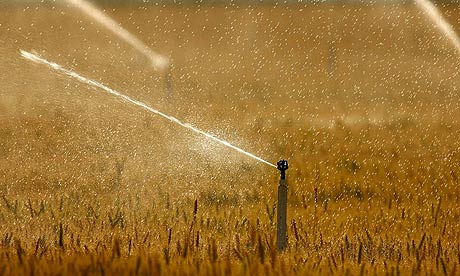
Sprinklers water wheat crops in Bakersfield, California. The state is facing a severe water crisis. Photograph: David McNew/Getty Images
Bill Diedrich, a fourth-generation almond grower in California’s Central Valley, expects that many of his trees won’t make it through the year. “It’s one of the grimmest water situations we’ve ever faced,” he said. “It’s an absolute emergency and anything to get water flowing quickly is needed.”
The 400-mile Central Valley is many things: the world’s largest agricultural area; the “salad bowl”, where half of the country’s vegetables are grown. But this year, with water shortages of a severity not seen for decades, many farmers and others are echoing the recent words of energy secretary Steven Chu: if current weather patterns continue, Californian agriculture could disappear.
John “Dusty” Giacone, another fourth-generation Central Valley farmer, was forced to abandon his vegetable crop and divert his scarce water to save his 4,000 hectares of almond trees.
Related article: Obama’s energy secretary outlines dire climate change scenario (Guardian)
“Taking water from a farmer is like taking a pipe from a plumber,” Giacone told the Associated Press. “How do you conduct business?”
But many farmers are choosing the opposite course, abandoning their almond trees for a season in the hope that the good times, and a wetter than normal spring, might return. In the meantime, the trees are being left to die, or maintained just enough to survive.
The decline in the number of almond trees has led to an unintended consequence: a glut of bee colonies. Bees are used to pollinate almond trees, and beekeepers now face the prospect of an economic collapse as the almond market withers away.
Severe drought threatens Chinese wheat crop
Low rainfall in the north has put nearly half of the country’s harvest at risk
A severe drought in northern China – considered the country’s breadbasket – has hit almost 43% of the country’s wheat crop this winter, senior officials have warned.
Low rainfall since October has affected more than 9.3m hectares (229.71 acres) of land in northern China across six major grain-producing provinces, according to the Office of State Flood Control and Drought Relief Headquarters. Last week it warned that 3.7 million people and 1.85 million livestock had lost access to drinking water.
Vice-premier Hui Liangyu has urged local officials to make tackling the water shortage a priority, state media reported today. Beijing has set aside 100m yuan (£10m) of funding to help farmers combat the problem and have sent specialist teams to the worst affected areas. Provincial governments are planning to seed clouds to ensure it rains.
Henan Daily reported that the drought is the province’s most severe since 1951, with no rain for 105 days. It warned that up to 63% of the region’s wheat crop is threatened.
Liberia declares state of emergency as caterpillar plague wrecks crops
Insect invasion is worst in the African country in 30 years
 |
Liberia has declared a state of emergency over a plague of caterpillars that has destroyed plants and crops and contaminated water supplies, threatening an already fragile food situation.
Tens of millions of marching caterpillars have invaded at least 80 towns and villages in central and northern Liberia, preventing some farmers from reaching their fields and causing others to flee their homes. The inch-long pests – the caterpillar life stage of the noctuid moth – have spread to neighbouring Guinea and are threatening Sierra Leone, which has set up monitoring teams along its border.
Liberia’s president, Ellen Johnson-Sirleaf, said in a televised speech on Monday night that the country’s worst plague of caterpillars in three decades had “the potential to set back our progress in the production of food and export crops”.
Read moreLiberia declares state of emergency as caterpillar plague wrecks crops
World warned of ‘food crunch’ threat
The world faces “the real risk of a food crunch” if governments do not take immediate action to address the agricultural impact of climate change and water scarcity, according to an authoritative report out on Monday.
Chatham House, the London-based think-tank, suggests that the recent fall in food prices is only a temporary reprieve and that prices are set to resume their upward trend once the world emerges from the current downturn.
“There is therefore a real risk of a ‘food crunch’ at some point in the future, which would fall particularly hard on import-dependent countries and on poor people everywhere,” the report states. “Food prices are poised to rise again,” it adds.
The warning is made as agriculture ministers and United Nations officials gather from Monday in Madrid for a UN meeting on food security likely to conclude that last year’s food crisis, with almost 1bn people hungry, is far from over.
The UN will warn ministers in Madrid that “as the global financial crisis deepens, hunger is likely to increase” under the impact of rising unemployment and lower remittances, according to three officials briefed ahead of the meeting.
Ecologists warn the planet is running short of water
A swelling global population, changing diets and mankind’s expanding “water footprint” could be bringing an end to the era of cheap water.
The warnings, in an annual report by the Pacific Institute in California, come as ecologists have begun adopting the term “peak ecological water” – the point where, like the concept of “peak oil”, the world has to confront a natural limit on something once considered virtually infinite.
The world is in danger of running out of “sustainably managed water”, according to Peter Gleick, the president of the Pacific Institute and a leading authority on global freshwater resources.
Read moreEcologists warn the planet is running short of water
Dry South Australia buys in water
 Australia is facing its worst drought in a century Australia is facing its worst drought in a century |
Australia’s driest state has decided to buy in water supplies amid fears it will run out next year.
South Australia said it had spent tens of millions of dollars to ensure Adelaide, Australia’s fifth-largest city, and the state had enough water.
State Premier Mike Rann described it as a “prudent and sensible” measure.
Drought has become a regular occurrence in South Australia, which already receives the least rainfall of any Australian state.
Lack of rainfall and a sharp reduction in the amount of water flowing into the Murray River meant the state could not guarantee water levels for 2009.
The state’s water security minister, Karlene Maywald, said she had purchased 61 billion gallons (231 gigalitres) of extra water for 2009.
California to cut water deliveries to cities, farms

SACRAMENTO, Calif. – California said Thursday that it plans to cut water deliveries to their second-lowest level ever next year, raising the prospect of rationing for cities and less planting by farmers.
The Department of Water Resources projects that it will deliver just 15 percent of the amount that local water agencies throughout California request every year.
Since the first State Water Project deliveries were made in 1962, the only time less water was promised was in 1993, but heavy precipitation that year ultimately allowed agencies to receive their full requests.
The reservoirs that are most crucial to the state’s water delivery system are at their lowest levels since 1977, after two years of dry weather and court-ordered restrictions on water pumping out of the Sacramento-San Joaquin Delta. This year, water agencies received just 35 percent of the water they requested.
Farmers in the Central Valley say they’ll be forced to fallow fields, while cities from the San Francisco Bay area to San Diego might have to require residents to ration water.
Read moreCalifornia to cut water deliveries to cities, farms
World is facing a natural resources crisis worse than financial crunch
• Two planets need by 2030 at this rate, warns report
• Humans using 30% more resources than sustainable
The world is heading for an “ecological credit crunch” far worse than the current financial crisis because humans are over-using the natural resources of the planet, an international study warns today.
The Living Planet report calculates that humans are using 30% more resources than the Earth can replenish each year, which is leading to deforestation, degraded soils, polluted air and water, and dramatic declines in numbers of fish and other species. As a result, we are running up an ecological debt of $4tr (£2.5tr) to $4.5tr every year – double the estimated losses made by the world’s financial institutions as a result of the credit crisis – say the report’s authors, led by the conservation group WWF, formerly the World Wildlife Fund. The figure is based on a UN report which calculated the economic value of services provided by ecosystems destroyed annually, such as diminished rainfall for crops or reduced flood protection.
Read moreWorld is facing a natural resources crisis worse than financial crunch
Drought devastates Iraq’s wheat crops
Power outages disrupt irrigation

BAGHDAD – It’s been a year of drought and sand storms across Iraq – a dry spell that has devastated the country’s crucial wheat crop and created new worries about the safety of drinking water.
U.S. officials warn that Iraq will need to increase wheat imports sharply this winter to make up for the lost crop – a sobering proposition with world food prices high and some internal refugees already struggling to afford basics.
“Planting … is totally destroyed,” said Daham Mohammed Salim, 40, who farms 120 acres in the al-Jazeera area near Tikrit, 130 kilometres north of Baghdad. “Even the ground water in wells is lower than before.”
The Tikrit area, where Saddam Hussein was born, normally is flush with green meadows in the spring and early summer – but this year has only thistles, said 30-year-old farmer Ziyad Sano. He’s resorted to collecting bread scraps from homes to feed his 70 sheep, but 20 have died.
Related articles:
– Floods may boost world food prices for years
– Floods wipe out US crops
– The Best Farmland in the U.S. Is Flooded; Most Americans Are Too Stupid to Panic
– The Price Of Food: 2007 – 2008
– The U.S. Has No Remaining Grain Reserves
– Nine meals from anarchy – how Britain is facing a very real food crisis
– Time to Stockpile Food?
– Food Riots are Coming to the U.S.
– UN alert: One-fourth of world’s wheat at risk from new fungus
– THE FOUR HORSEMEN APPROACH – FAMINE IS IN THE AIR
– Philippines: Food Shortage Looms – Arroyo Adviser
The dry weather has hurt areas from Kurdistan’s wheat fields in northern Iraq to pomegranate orchards, orange groves and wheat fields just north of Baghdad.
DROUGHT-STRICKEN CYPRUS GETS WATER FROM GREECE
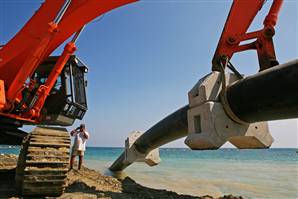
NICOSIA, Cyprus – A Greek tanker carrying about 1.76 million cubic feet of water arrived in the Cypriot port of Limassol on Monday to help the drought-stricken island replenish its dwindling water reserves.
The tanker is the first in a fleet of ships chartered by the Cypriot government at a cost of $65 million to provide water to towns now experiencing emergency rationing.
With the Mediterranean island’s 17 main reservoirs now at critical levels – just seven percent full – Cypriots have endured meager water rations since March.
The main water pipelines have been turned on for only a few nights each week. And some residents, particularly those living in high-rise apartment blocks, have complained of not getting any water at all because pressure has been insufficient to push the water to rooftop storage tanks.
Cypriots have been forbidden to wash their cars or water their gardens. Underground water pumped from boreholes has also become scarce.
The Coming Catastrophe?
Global Research Editor’s note
We bring to the attention of our readers David DeBatto’s scenario as to what might occur if one of the several contingency plans to attack Iran, with the participation of Israel and NATO, were to be carried out. While one may disagree with certain elements of detail of the author’s text, the thrust of this analysis must be taken seriously.
___________________________________________________________________________________________
By David DeBatto
David DeBatto is a former U.S. Army Counterintelligence Special Agent, Iraqi war veteran and co-author the “CI” series from Warner Books and the upcoming “Counter to Intelligence” from Praeger Security International.
The finishing touches on several contingency plans for attacking Iran

“Israel has said a strike on Iran will be “unavoidable” if the Islamic regime continues to press ahead with alleged plans for building an atom-bomb.” (London Daily Telegraph, 6/11/2008)
“Chancellor Angela Merkel of Germany joined President Bush on Wednesday in calling for further sanctions against Iran if it does not suspend its uranium enrichment program.” Mr. Bush stressed again that “all options are on the table,” which would include military force. (New York Times, 6/11/2008)
We are fast approaching the final six months of the Bush administration. The quagmire in Iraq is in its sixth painful year with no real end in sight and the forgotten war in Afghanistan is well into its seventh year. The “dead enders” and other armed factions are still alive and well in Iraq and the Taliban in Afghanistan again controls most of that country. Gas prices have now reached an average of $4.00 a gallon nationally and several analysts predict the price will rise to $5.00-$6.00 dollars per gallon at the pump by Labor Day. This, despite assurances by some major supporters of the decision to invade Iraq that the Iraq war “will pay for itself” (Paul Wolfowitz) or that we will see “$20.00 per barrel” oil prices if we invade Iraq (Rupert Murdoch).
One thing the Pentagon routinely does (and does very well) is conduct war games. Top brass there are constantly developing strategies for conducting any number of theoretical missions based on real or perceived threats to our national security or vital interests. This was also done prior to the invasion of Iraq, but the Bush administration chose not to listen to the dire warnings about that mission given to him by Pentagon leaders, or for that matter, by his own senior intelligence officials. Nevertheless, war gaming is in full swing again right now with the bullseye just to the right of our current mess – Iran.
It’s no secret that the U.S. is currently putting the finishing touches on several contingency plans for attacking Iranian nuclear and military facilities. With our ground forces stretched to the breaking point in Iraq and Afghanistan, none of the most likely scenarios involve a ground invasion. Not that this administration wouldn’t prefer to march into the seat of Shiite Islam behind a solid, moving line of M1 Abrams tanks and proclaim the country for democracy. The fact is that even the President knows we can’t pull that off any more so he and the neo-cons will have to settle for Shock and Awe Lite.
If we invade Iran this year it will be done using hundreds of sorties by carrier based aircraft already stationed in the Persian Gulf and from land based aircraft located in Iraq and Qatar. They will strike the known nuclear facilities located in and around Tehran and the rest of the country as well as bases containing major units of the Iranian military, anti-aircraft installations and units of the Revolutionary Guard (a separate and potent Iranian para-military organization).
Will this military action stop Iran’s efforts to develop nuclear weapons? Probably not. It will probably not even destroy all of their nuclear research facilities, the most sensitive of which are known to be underground, protected by tons of earth and reinforced concrete and steel designed to survive almost all attacks using conventional munitions. The Iranian military and Revolutionary Guard will most likely survive as well, although they will suffer significant casualties and major bases and command centers will undoubtedly be destroyed. However, since Iran has both a functioning Air Force, Navy (including submarines) and modern anti-aircraft capabilities, U.S. fighter-bombers will suffer casualties as well. This will not be a “Cake Walk” as with the U.S. led invasion of Iraq in 2003 when the Iraqi Army simply melted away and the Iraqi Air Force never even launched a single aircraft.
Not even close.
If the United States attacks Iran either this summer or this fall, the American people had better be prepared for a shock that may perhaps be even greater to the national psyche (and economy) than 9/11. First of all, there will be significant U.S. casualties in the initial invasion. American jets will be shot down and the American pilots who are not killed will be taken prisoner – including female pilots. Iranian Yakhonts 26, Sunburn 22 and Exocet missiles will seek out and strike U.S. naval battle groups bottled up in the narrow waters of the Persian Gulf with very deadly results. American sailors will be killed and U.S. ships will be badly damaged and perhaps sunk. We may even witness the first attack on an American Aircraft carrier since World War II.
That’s just the opening act.
Israel (who had thus far stayed out of the fray by letting the U.S. military do the heavy lifting) is attacked by Hezbollah in a coordinated and large scale effort. Widespread and grisly casualties effectively paralyze the nation, a notion once thought impossible. Iran’s newest ally in the region, Syria, then unleashes a barrage of over 200 Scud B, C and D missiles at Israel, each armed with VX gas. Since all of Israel is within range of these Russian built weapons, Haifa, Tel Aviv, Jerusalem and virtually all major civilian centers and several military bases are struck, often with a result of massive casualties.
The Israeli Air Force orders all three squadrons of their F-16I Sufa fighter/bombers into the air with orders to bomb Tehran and as many military and nuclear bases as they can before they are either shot down or run out of fuel. It is a one way trip for some of these pilots. Their ancient homeland lies in ruins. Many have family that is already dead or dying. They do not wait for permission from Washington, DC or U.S. regional military commanders. The Israeli aircraft are carrying the majority of their country’s nuclear arsenal under their wings.
Just after the first waves of U.S. bombers cross into Iranian airspace, the Iranian Navy, using shore based missiles and small, fast attack craft sinks several oil tankers in the Straits of Hormuz, sealing off the Persian Gulf and all its oil from the rest of the world. They then mine the area, making it difficult and even deadly for American minesweepers to clear the straits. Whatever is left of the Iranian Navy and Air Force harasses our Navy as it attempts minesweeping operations. More U.S casualties.
The day after the invasion Wall Street (and to a lesser extent, Tokyo, London and Frankfurt) acts as it always does in an international crisis – irrational speculative and spot buying reaches fever pitch and sends the cost of oil skyrocketing. In the immediate aftermath of the U.S. invasion of Iran, the price of oil goes to $200.00 – $300.00 dollars a barrel on the open market. If the war is not resolved in a few weeks, that price could rise even higher. This will send the price of gasoline at the pump in this country to $8.00-$10.00 per gallon immediately and subsequently to even higher unthinkable levels.
If that happens, this country shuts down. Most Americans are not be able to afford gas to go to work. Truckers pull their big rigs to the side of the road and simply walk away. Food, medicine and other critical products are not be brought to stores. Gas and electricity (what is left of the short supply) are too expensive for most people to afford. Children, the sick and elderly die from lack of air-conditioned homes and hospitals in the summer. Children, the sick and elderly die in the winter for lack of heat. There are food riots across the country. A barter system takes the place of currency and credit as the economy dissolves and banks close or limit withdrawals. Civil unrest builds.
The police are unable to contain the violence and are themselves victims of the same crisis as the rest of the population. Civilian rule dissolves and Martial Law is declared under provisions approved under the Patriot Act. Regular U.S. Army and Marine troops patrol the streets. The federal government apparatus is moved to an unknown but secure location. The United States descends into chaos and becomes a third world country. Its time as the lone superpower is over.
It doesn’t get any worse than this.
Then the first Israeli bomber drops its nuclear payload on Tehran.
Source: Global Research
Water Restoration Act May Lead to Privatization of Water Supply

(NaturalNews) The fate of the nation’s water supply is under debate as hearings in the House and Senate begin on the Water Restoration Act of 2007. Opponents claim this Act threatens to greatly expand the Federal Government’s roll in water management. This Act would define waters of the U.S. as “all interstate and intrastate waters and their tributaries, including lakes, rivers, streams (including intermittent streams) mudflats, sand flats, wetlands, sloughs, prairie potholes, wet meadows, playa lakes, natural ponds, and all impoundments of the foregoing”. In other words, this bill will give the federal government total control of the most basic of all commodities necessary to life on this earth.
The Environmental Protection Agency and the Army Corps of Engineers currently have authority over all waters considered navigable in the U.S. The Code of Federal Regulations 33 CFR 329.4 defines navigable waters as “those waters that are subject to the ebb and flow of the tide and/or presently used, or have been used in the past, or may be susceptible for use to transport interstate or foreign commerce.”
The Water Restoration Act, a bipartisan bill lead/sponsored by Congressman Oberstar, is an amendment to the Federal Water Pollution Act, commonly known as the Clean Water Act. Since major amendments were enacted in 1977, the Clean Water Act protected all of the nation’s waters as Congress intended, until 2003, when the Bush administration gave in to pressure form corporate polluters and redefined the meaning of water. This happened through a bureaucratic device called a ‘guidance’, whereby the EPA instructed federal environmental law enforcers to back off from holding many polluters accountable.
Proponents of the Clean Water Restoration Act see it as restoring what was Congress’s original intent, that the Clean Water Act protect all of the nation’s waters. They see water quality and quantity issues as needing examination this spring, and believe now is the time for getting legislation to protect the water supply in order with the passage of this Act. They see the Act as offering needed protection from water pollution, from terrorists, and being in the interests of national security.
Is water a basic human right or a commodity?
Related article: UN rejects water as basic human right
Actually this should cause a global outrage and a revolution. – The Infinite Unknown
Under the Public Trust doctrine, the government is prohibited from converting something such as water to the status of a commodity. Water is considered a basic human right that must remain in the public trust, meaning that it is so important to our survival that it should never be reclassified as a commodity. Many believe that the Water Restoration Act lays the foundation for removing water from the Public Trust and facilitating it to fall under the ownership and control of corporations as a commodity. This is similar to how seeds have fallen into corporate control when they were once viewed as part of the Public Trust under the assumption that all people have a right to seeds with which to grow food for themselves.
Commodity owning corporations can now sue the government if it acts in any way to prevent them from making profits they believe they are entitled to. This ability to sue for impaired profit making can be the result of environmental regulations, of Federal laws which may prevent the corporations from hiring illegal workers, or issues of eminent domain in which an individual’s land stands in the way of corporate earnings, and the courts have not acted to protect the interests of the corporation.
All the corporation has to do to supersede federal law is claim ‘trade illegal’ provisions of NAFTA and CAFTA. Federal laws and regulations are then put aside, along with property rights. CAFTA goes a long way in establishing the privatization of water supplies, including in-land navigated waters and the right to use and access the water supplies.
Federal control over all water may lead to its privatization
If the federal government is unable to gain total control of all water from whatever source, it is highly unlikely that water can be taken from the status of Public Trust and changed to that of commodity. If in fact the Water Restoration Act allows for the complete control of the federal government over all water in the country, as it opponents claim, water can loose its status as part of the Public Trust, and become a commodity available for corporate ownership.
The Water Restoration Act federalizes all inland and coastal waters from any source. This Act is needed to set the stage for the corporate privatization guaranteed under CAFTA, and would effectively convert the entire water supply from any source into the status of a commodity.
Read moreWater Restoration Act May Lead to Privatization of Water Supply
American Inventor Presents an Answer to the World’s Water Crisis
Related article: Water crisis to be biggest world risk

(NaturalNews) Dean Kamen is not a new player in the innovator’s arena. He has been inventing and innovating ever since he dropped out of Worcester Polytechnic Institute in the 70’s. Since then, he invented such things as the insulin pump, a mobile dialysis system, and an all-terrain electric wheelchair called the iBot. His best-known invention is the Segway, a self-balancing, gyroscope-using, automatic-steering, scooter-like device that did not sell well in the U.S. but is expected to do better in Europe.
His newest invention could turn out to be world-changing. The term “revolutionary” comes to mind but may be too overused to express what this device could do for the world’s poor. It could save the lives of hundreds of millions of people in the third world. And it’s really quite simple. This invention answers the question — “How do you get drinkable water to the world’s thirsty?”
The Slingshot, A Revolutionary Water-Purifier
The invention, known as Slingshot, is basically a distiller. Distilling technology is not new. In fact, distillers have been around for decades. What makes this distiller unique is the low price and the large amount of water that can be produced. Other machines like the Slingshot can cost as much as $200,000 to $1 million. The Slingshot is expected to cost only $1,500. And it can filter 1,000 liters a day, using only 500 watts of electricity per hour. To put that into perspective, a toaster uses about 1,000 watts every time you make toast.
Possibly even more exciting than the cost-effectiveness and simplicity of the technology is its power. It can purify any source of moisture, whether ocean water, urine, or mud. And it does it all without filters, charcoal, or any other parts that must be replaced each time you use it.
The Slingshot has been slated for release within the next 12-18 months.
Saving Millions of Lives Every Year
“In the emerging world, in the under-developed world, a gallon of water is so precious that without it, you’re going to die,” says Kamen.
“In some places, the average amount of time per day spent looking for water that’s safe for their kids by women is four hours. And they carry this stuff, which weighs 62 pounds per cubic foot, four or five miles. And if it didn’t turn out to be the right stuff, or they put their hands in it and contaminated it, they spend the next day or two burying the babies.”
What will these women do with their extra 4 hours every day? How many families will be blessed by mothers who have the power to give water to their thirsty children? And with other inventions like the Merry-Go-Round power plant (see http://www.youtube.com/watch?v=uQu_Jppvzyk&eurl) , we may start to see our friends in the third-world finding a luxury that we have taken for granted for hundreds of years in the U.S. — fresh, drinkable water.
To see a video of Stephen Colbert questioning Kamen about the Slingshot, go to ((http://www.comedycentral.com/videos/ind…) .
Read moreAmerican Inventor Presents an Answer to the World’s Water Crisis
